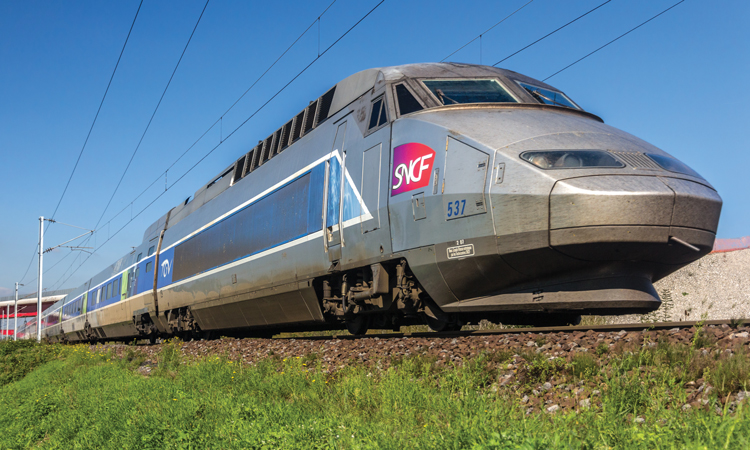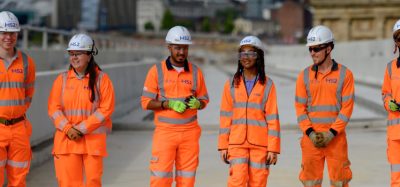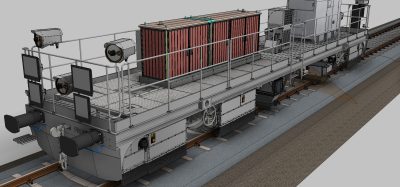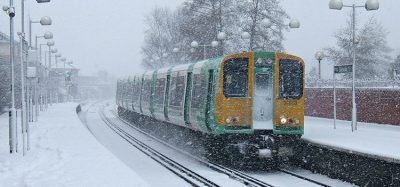All change for safety improvement
Posted: 4 February 2014 | Christian Schang - SNCF Infra, Patrick Jouenne - SNCF Infra | No comments yet
France will soon change its railway system. The infrastructure manager, RFF (Réseau Ferré de France) which was separated from the operations manager, SNCF, in 1997, will be integrated in the same national railway company, compliant with European rules. Infrastructure, rolling stock and the operational management of the French railway network needs a high level of coordination. One of the biggest challenges is the implementation of network modernisation and in the improvement of safety management for the 30,000km-long French railway network.


The current situation of the railway
Maintenance of the French railway network and the investments which allow the modernisation of the network to be carried out are managed according to two very different processes.
Investment projects follow different study stages, a phase of construction which requires continuous controlling of the processes by guaranteeing the safety of the railway system.
For this reason, it is clear that the investments are entrusted by SNCF staff to ensure project tasks, and to simultaneously ensure a high level of maintenance is upheld.
Safety is vital for the rail network
Safety remains the biggest topic for all railway networks the world over. But changing the rules and the roles of how the system operates, how it is maintained and establishing modernisation programmes will be the most challenging aspects that the French railway system will face over the coming years.
The SNCF Infrastructure manager has been the infrastructure delegate manager for the past 15 years. This means that the system will not be completely overawed, but will keep certain continuity within the network management. Nevertheless the responsibilities of each actor will be studied and the relationship between the actors simplified.
The safety management contains two principle issues: the safety of people and the safety of operations on the network during on-going work.
These two principles are taken into account in the safety management of every project, with the target to guarantee the safety of railway operations throughout all realisation of the work. This serves not only to optimise the possession costs, but also to ensure safety remains the chief concern of all the people involved in the projects and operations.
Working closely together in a comprehensive frame of rules where each manager, railway employee and contractor employee knows their exact responsibilities and what they have to do, should allow us to achieve the target of zero accidents.
The actors: the purpose, who and what
The organisation of the French railway safety system is not unusual in regard to European rules. First of all an independent body called EPSF (public body of railway safety) leads the system. The current infrastructure manager and owner of the railway infrastructure is RFF. SNCF Infra, in charge of the maintenance and development of the railway network, decided to modify its organisation to match the future, and new, organisation: one infrastructure manager for the entire French railway network. A brand new division was created known as Project System and Engineering which is in charge of the implementation of projects and development of the railway system including safety management, from the implementation of the rules and methods to the definition of the responsibilities on each stage and phase of the railway infrastructure management.
The delegated project management and the assistance to project owner assignments are awarded by RFF, which, in the future, will be integrated into one body. The main areas of influence could be defined in the scope of responsibilities as:
- Scoping and feasibility studies
- Translating requirements into operations (specifications)
- Risk analysis
- Taking into account legal and regulatory obligations
- Support in public affairs
- Assistance for selection of contractor service provider
- Assistance for tender procedure and supervision of works
- Health and safety coordination
- The approval of materials and components of the infrastructure.
And the most important issue: integrating the specific characteristics of a network in operation during all stages of project implementation, from design to work implementation or network upgrading programmes.
Also integrated in the Project System and Engineering division are the safety and protection services – with an approximate turnover of €600 million, including:
- Providing safety and protection services as part of investment projects on the network
- Live announcement of rail traffic
- Implementation of an automated rail traffic announcement system
- Creation of position of Works Window Manager (RPTX)
- Electrical protection (e.g. shutting down OHLs)
- Providing Works trains
- Accompanying works trains
- Driving Company machines
- Supplying locomotives
- Supplying wagons
- Starting up safety plant and equipment
- Technical verifications
- Testing
- The integration of new installations in the operated network.
The future situation
The evolution of the announced new organisation will not have a major impact on the maintenance of the railway network.
On the other hand, a double challenge exists concerning investment projects for the modernisation of the network and its process changes due to the merging of RFF and SNCF Infra.
The first challenge is to absorb a volume of investment in continuous strong increase, which implies to find methods based on innovation and make it possible to complete the works while maintaining the same level of network operation capacity within a high level of safety.
The second challenge is to accompany and upgrade the skills of all the actors involved in the supervision of works and projects. What is relevant here is to take on staff in order to achieve the human resources targets necessary to realise all these projects and investments. This will allow the railway system to be upgraded safely.
This second challenge forces us to clearly specify the processes which make it possible to guarantee the skills of the external resources, specifically:
- Definition of the applicable reference frames
- Definition of the relevant criteria linked to safety management
- Definition of the specifications of the training
- Identification of the teams which will be able to ensure the training
- Definition of the processes of internal and external controls.
The project organisation covering the entire network includes safety management on each level and begins in the early stages of the design (feasibility studies for example). There will be a crossover between two different safety management systems during 2014. The issue to be managed is to achieve all the changes in quality and safety. The important investments need to implement new teams and organise the project management in partnership with others (industry, engineering companies, and contractors).
Conclusion
Today, we are in the middle of this huge challenge but, by the end of 2014 the organisation will be in place which will bring more passenger services, increased comfort and improved safety, and therefore keep those targets which are vital for all those involved in the railway industry.
Special attention will be given during 2014 to merge from one railway system to the other. Then the great adventure will really begin: modernisation of the French network, upgrading the level of quality, the implementation of ETCS Level 2 on all main lines, etc.; but that will be another story.
Biography




Stay Connected with Global Railway Review — Subscribe for Free!
Get exclusive access to the latest rail industry insights from Global Railway Review — all tailored to your interests.
✅ Expert-Led Webinars – Gain insights from global industry leaders
✅ Weekly News & Reports – Rail project updates, thought leadership, and exclusive interviews
✅ Partner Innovations – Discover cutting-edge rail technologies
✅ Print/Digital Magazine – Enjoy two in-depth issues per year, packed with expert content
Choose the updates that matter most to you. Sign up now to stay informed, inspired, and connected — all for free!
Thank you for being part of our community. Let’s keep shaping the future of rail together!








